Author: steve
Introduction
At this year’s Shanghai Auto Show, QZ Intelligent Navigation, in partnership with China Mobile, released an operation report on unmanned public transportation, and exhibited the Longzhou unmanned bus manufactured by Suzhou King Long United Automotive Industry Co., Ltd. Meanwhile, QZ Intelligent Navigation CEO Yu Qian stated in an interview that “in China, BoboBus will definitely land faster than RobotTaxi.” The time will tell if this statement is verified, but it is evident that QZ Intelligent Navigation, a company established in early 2019 to develop autonomous driving in complex urban traffic environments, is confident in its own technical capabilities and development direction.

And this confidence is not without foundation. QZ Intelligent Navigation, as a “rising star” in the autonomous driving industry that has only been established for two years, has already drawn attention from insiders. Its core team members come from world-class self-driving and technology companies such as Waymo, Tesla, Uber ATG, Ford, NVIDIA, and Facebook, which also determine the minimum level of this company. In January 2020, QZ Intelligent Navigation signed a strategic cooperation agreement with Suzhou High-speed Railway New City to conduct multiple unmanned driving scenario test operations, gradually expanding to the entire Suzhou Xiangcheng district. The achievement not only relied on the strong support for autonomous driving in this new first-tier city, but also on the solid technical capabilities of QZ Intelligent Navigation.
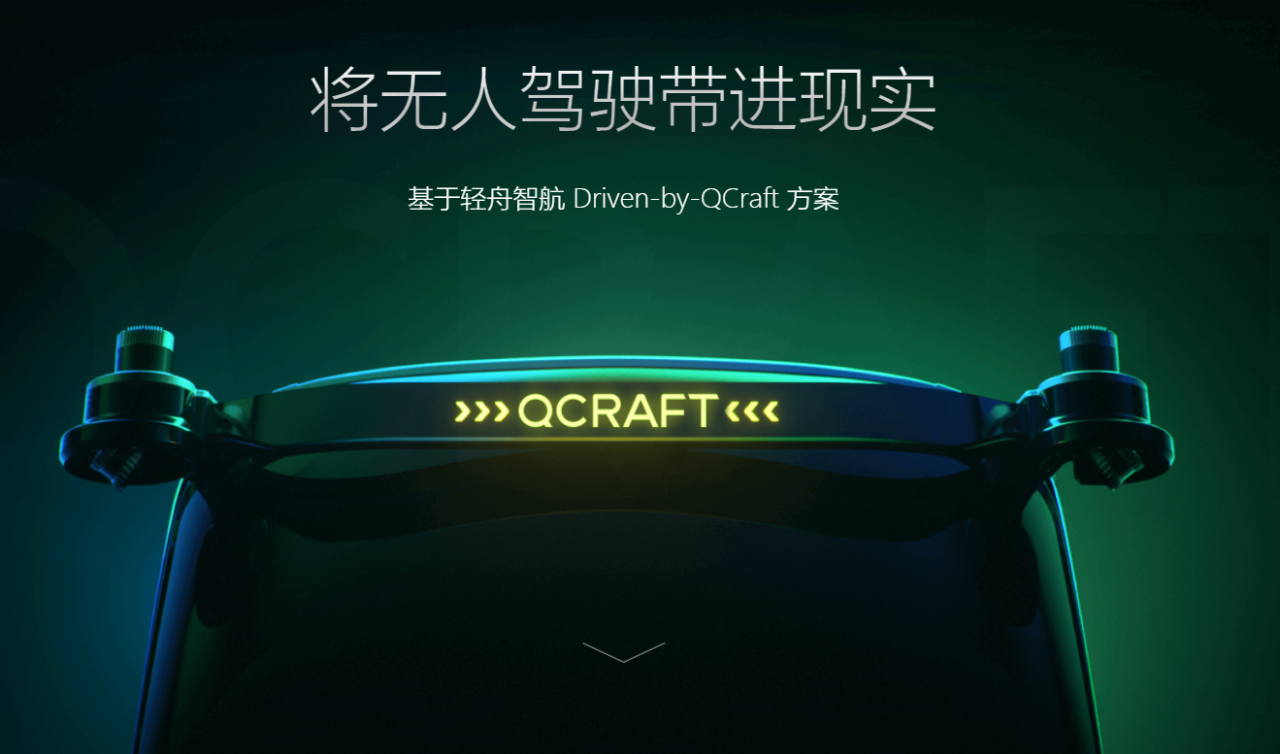
On October 21, 2020, QZ Intelligent Navigation and China Mobile jointly released a test operation route for unmanned public transportation in Suzhou, with a total length of 3.4 kilometers, 5 stations along the way, and more than 10 intersections. Currently, there are 2 vehicles operating on the entire route, and 10 vehicles are being tested in the Suzhou High Speed Rail New City area.
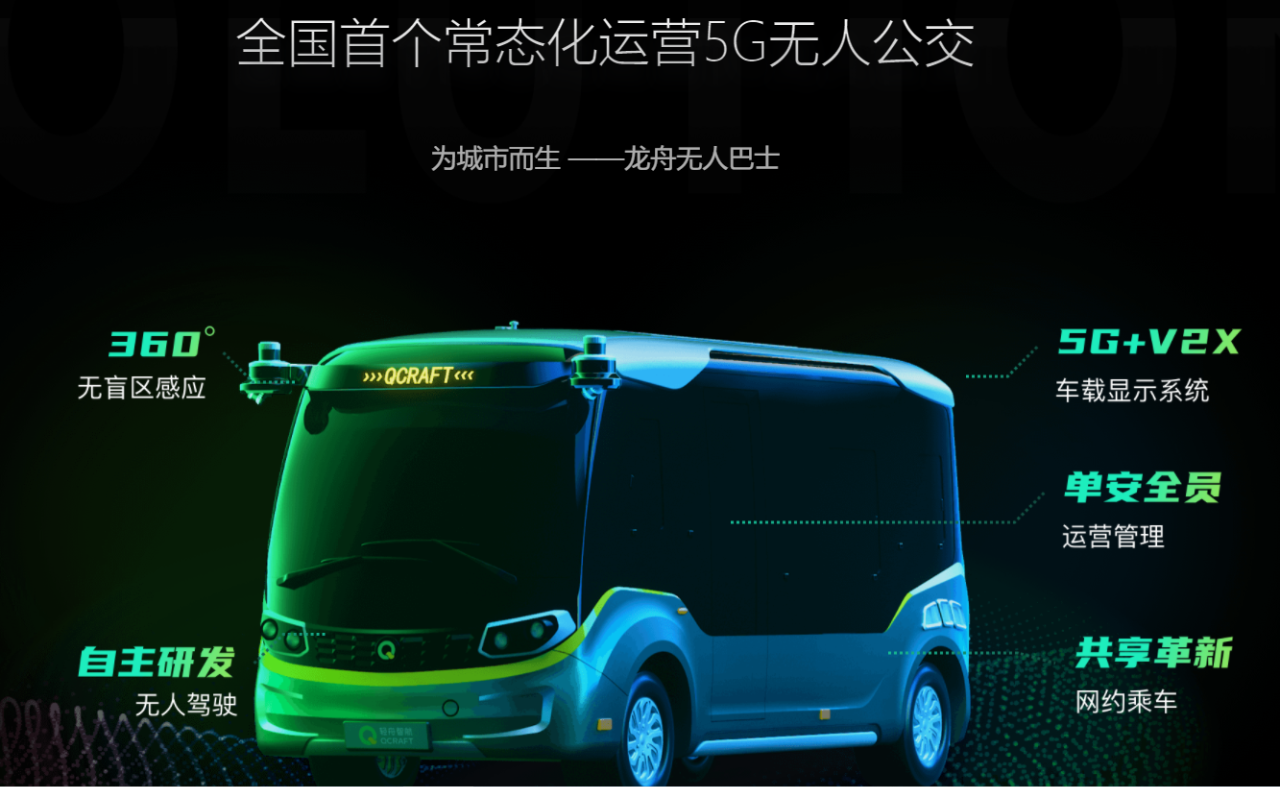
According to official data, as of March 31, a total of 2,924 early bird users have ridden over 11,000 times, with a total operating mileage of 15,000 kilometers and an average daily ridership of 116.15 people.The normalized operation of unmanned buses with outstanding performance naturally attracted the attention of investors. On March 4th, 42HOW announced that it had obtained tens of millions of dollars in A1 round investment. As the leader of domestic Robobus, 42HOW aims at the trillion-dollar future urban smart travel market. Its deployed Robobus ONE (also known as Lightboat unmanned minibus) has landed in multiple cities and is currently the unmanned public road transportation project with the most cities coverage. This round of financing will be used to continue building an “automated production super factory” for autonomous driving.
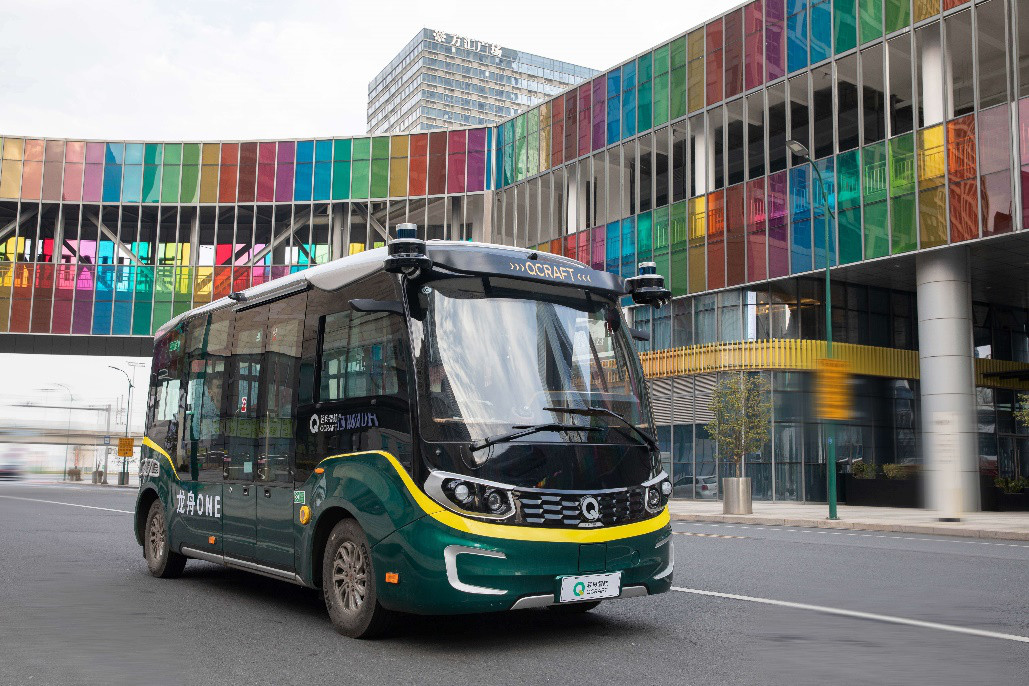
Last weekend, I went on a business trip to Suzhou and took the opportunity to experience 42HOW’s unmanned bus that has been in operation for nearly half a year. I arrived relatively late, around 4:30 pm, which was close to the last bus of the day. Prior to this, tourists who want to experience it need to make an appointment on the 42HOW WeChat mini program, and can board the bus with a QR code after the appointment is successful.
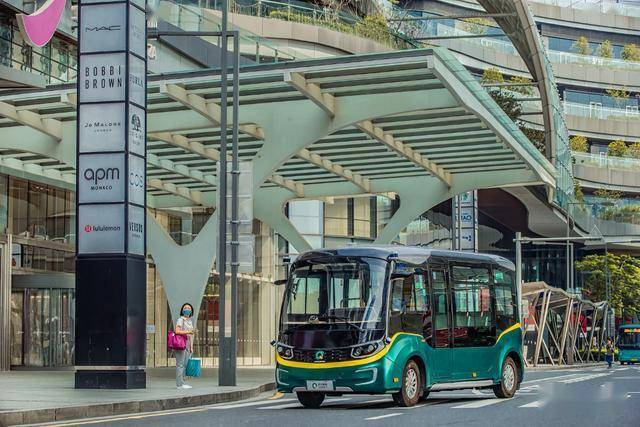
Currently, the interval between unmanned bus trips is about 20 minutes. Just after boarding, passengers can see that there is still a safety officer onboard. This can also be understood as ensuring absolute safety during testing on open roads in Suzhou under immature technology conditions. Besides myself, there was only one elderly man on the bus, which was less lively than I expected. It seems that the hype has passed after running for a period of time, and there are also fewer citizens coming to try. Also, due to the short route and few stations, there should be few stations that really meet the needs of citizens’ travel.
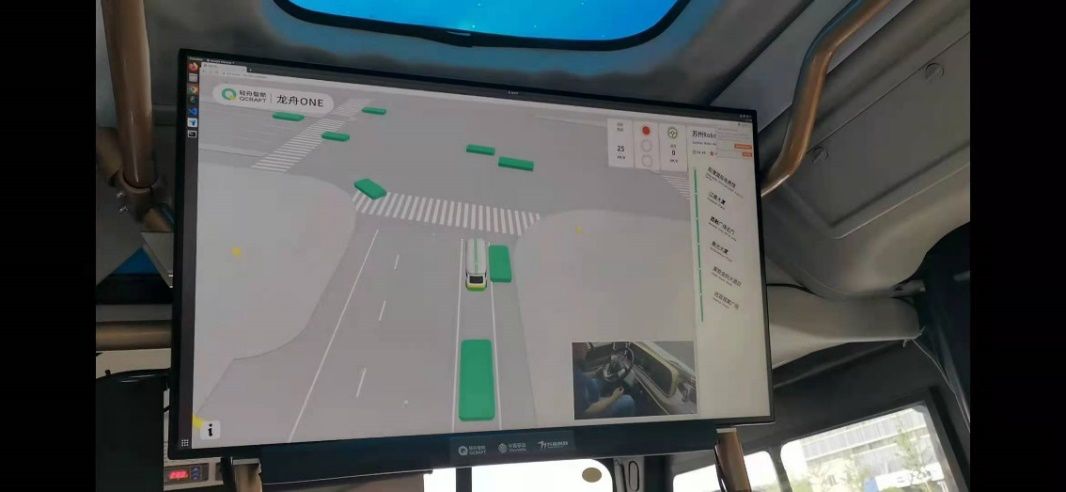
After sitting down, what came into view was the large display screen behind the driver, showing the real-time path planning and obstacle detection of unmanned buses. Obstacles and vehicles are represented by green boxes, while pedestrians and cyclists are represented by yellow models. The lower right corner of the screen recorded the hands and steering wheel of the safety officer in real time. Based on this, we can see when it is in autonomous driving mode and when the safety officer takes over. The right side of the screen displays the station information, showing that there are only six stops currently.
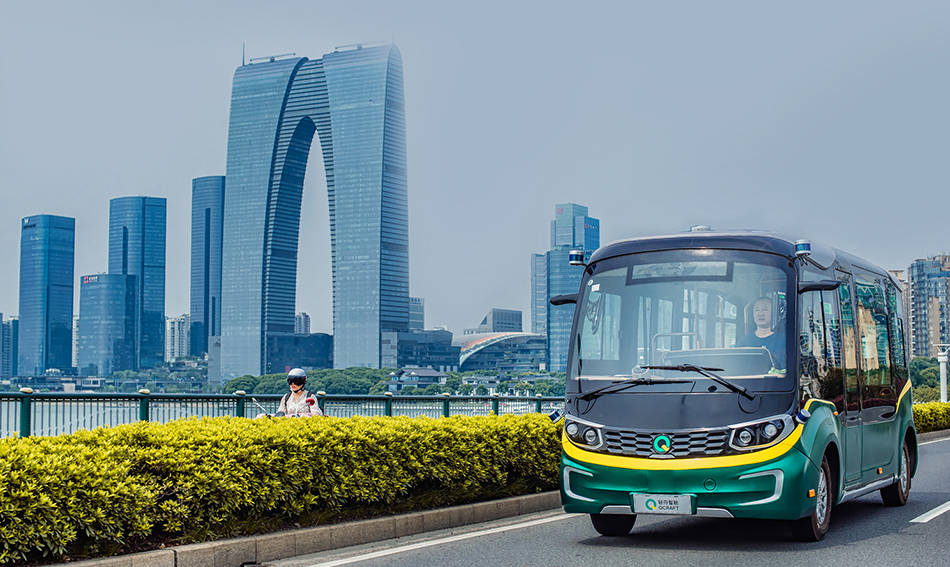 The whole experience feels pretty good. The performance of vehicle startup, parking at traffic lights, and parking at destination are all very smooth. The perception of obstacles at close range is also very stable. From the display interface, there are hardly any flashes of obstacles. However, there are still some missed detections of obstacles, mainly in pedestrians on the sidewalk and electric bicycles riding on the roadside. Due to the simple road conditions of the trial operation bus line, there has been no situation where the safety officer took over due to misjudgment throughout the whole journey. I experienced a complete circle of bus line, which took about ten minutes in total. The only time of take-over occurred when the preceding vehicle stopped at the bus station for a long time and the unmanned bus was waiting behind. At this time, the safety officer took over and backed up to avoid the preceding vehicle. This also shows the necessity of safety officers. The unmanned bus cannot yet deal well with many road conditions that human drivers consider simple, such as waiting behind when the preceding vehicle stops and cannot make predictions in advance like human drivers to bypass or complete simple reversing to avoid.
The whole experience feels pretty good. The performance of vehicle startup, parking at traffic lights, and parking at destination are all very smooth. The perception of obstacles at close range is also very stable. From the display interface, there are hardly any flashes of obstacles. However, there are still some missed detections of obstacles, mainly in pedestrians on the sidewalk and electric bicycles riding on the roadside. Due to the simple road conditions of the trial operation bus line, there has been no situation where the safety officer took over due to misjudgment throughout the whole journey. I experienced a complete circle of bus line, which took about ten minutes in total. The only time of take-over occurred when the preceding vehicle stopped at the bus station for a long time and the unmanned bus was waiting behind. At this time, the safety officer took over and backed up to avoid the preceding vehicle. This also shows the necessity of safety officers. The unmanned bus cannot yet deal well with many road conditions that human drivers consider simple, such as waiting behind when the preceding vehicle stops and cannot make predictions in advance like human drivers to bypass or complete simple reversing to avoid.
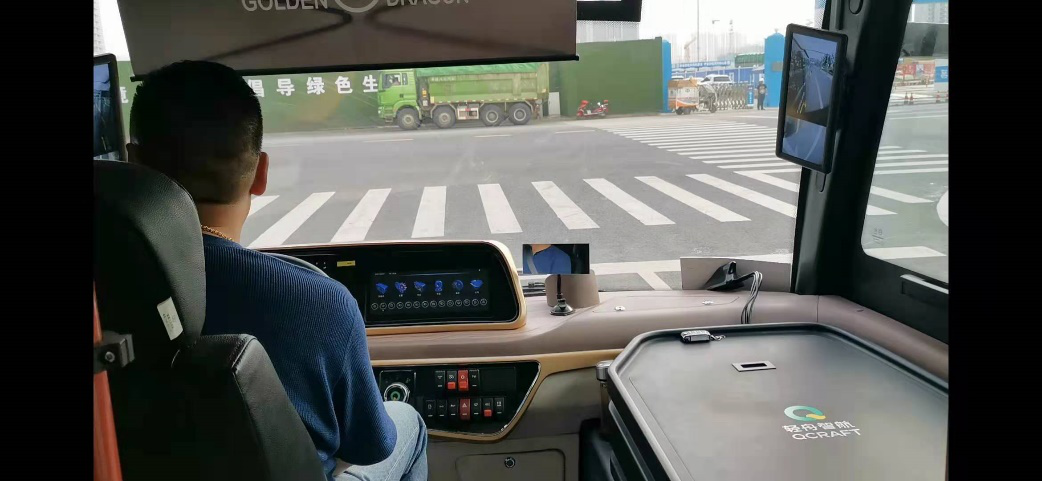
Overall, the performance of the unmanned bus from QCraft is only qualified when compared with demo videos from various self-driving companies at present. However, this is due to the too simple road conditions of the route, which may not show the full strength of its technical level. In the current situation where unmanned driving is not widely accepted by the public, adopting a conservative strategy is actually beneficial to the steady development of the company, avoiding negative news.
Next, QCraft is ready to expand the route of unmanned bus to four, covering an area of nearly 10 square kilometers. Yu Qian also revealed that QCraft will launch an L3-level intelligent bus this year. However, QCraft also emphasized that this technology is not to replace drivers but to reduce their workload. At the same time, this bus will also introduce China Mobile’s 5G-V2X technology.
Anyway, whether it is RoboBus or RoboTaxi, it will be a long way to remove safety officers and truly land in China. I also agree with Yu Qian’s opinion personally. After all, the application scenario of RoboBus has a fixed route and is more likely to receive support from the government. In the current Chinese market, it should be one of the scenes where self-driving will be put into commercial use the fastest. QCraft has gathered its technical strength and the support of the municipal government. Only time can tell us to what extent QCraft can promote the normalized operation of RoboBus.
This article is a translation by ChatGPT of a Chinese report from 42HOW. If you have any questions about it, please email bd@42how.com.